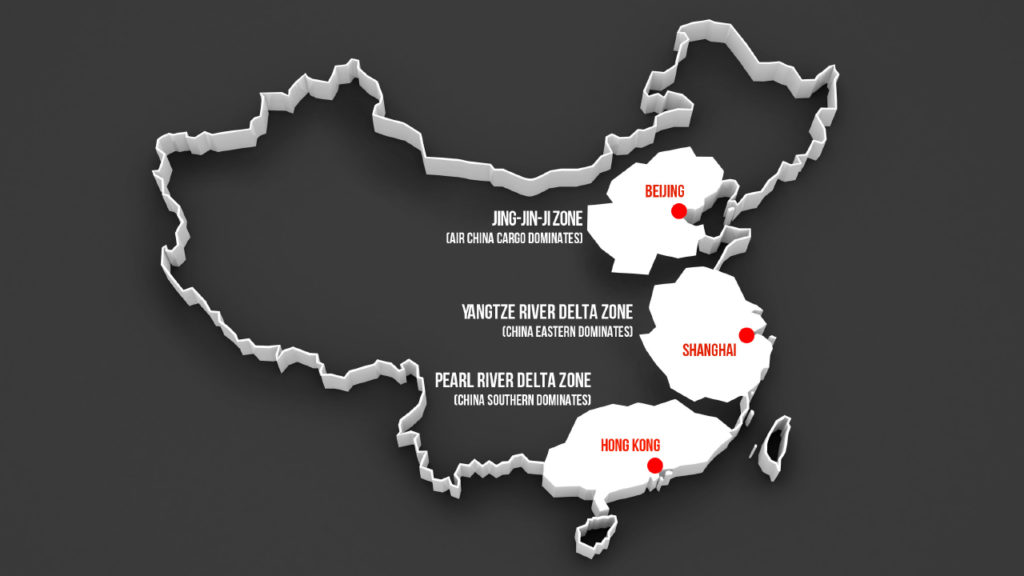No products in the cart.
Many Paths Forward: Which Chinese carrier has the right e-commerce strategy?

A single brown box is plopped down on the doorstep of family home in a rural town in the southwest Chinese province of Sichuan. The driver, who owns a two-van operation distributing packages to area residents, is now on his way to deliver his next package in the adjacent village. It’s a five-and-a-half-hour drive to Chengdu, the closest major city in the region. Twenty-four hours earlier, the resident had placed an order for a week’s worth of groceries from Fruit Day, a popular online grocery platform backed by e-commerce giant JD.com. Eight hours after the resident clicked “complete check-out,” a box containing New England lobster and Peruvian blueberries was sitting on the stoop.
Prior to the delivery, the perishables had been expedited through an intricate network of cool-chain storage facilities and refrigerated trucks owned by JD Logistics, but before it was ever handed over to JD to assemble, the cargo would touch the metal of one of the country’s “Big Three” carriers, Air China Cargo, China Eastern Airlines or China Southern Airlines.
“Air cargo is costly, but has its benefits,” said Lori Chao, director of international communications at JD Logistics, “especially for some product categories. As a retailer shipping such a wide variety of products to such a large population, we will always have diverse transportation needs.”
Indeed, the Big Three carriers have done well in capitalizing on those needs. China Eastern and Air China Cargo both frequently work with JD, fulfilling the company’s need for capacity. China Eastern dominates Shanghai and the surrounding region for transporting perishables, while Air China Cargo operates mainly within the “JingJin-Ji” economic zone that encompasses the metro areas surrounding Beijing, Tianjin, and Hebei, in northern China. China Southern, on the other hand, has focused on fulfilling a need for capacity from local forwarders as a major source of business, as opposed to partnering directly with any of the e-commerce platforms.
Shippers of all types, including freight forwarders and express companies, rely on airfreight capacity from the Big Three – either on inbound widebody freighters, or in the bellies of the carriers’ passenger fleets. Unlike the comparable U.S. counterpart, Amazon.com, JD doesn’t have any plans to assemble a fleet of its own, it told Air Cargo World.
Brian Bourke, the vice president of marketing at SEKO Logistics, which frequently does business with China’s Big Three cargo carriers, acknowledged the Big Three’s market dominance, saying that if you want to ensure your client’s orders are delivered quickly – the key word being “quickly” – working with the Big Three is an absolute necessity.
“If you don’t make those two days, your brand and reputation suffers,” he said, echoing Alibaba CEO Jack Ma’s “72-hour goal,” which was minted back in April of 2017. Ray Lo, Air China Cargo’s vice president of service and operations, was more succinct: “The new services standard requirement is 24 hours domestically and 72 hours internationally.”
The expectation from consumers to receive shipments in less than three days – and preferably just one – is a standard that has forced shippers and forwarders into sending cargo by air whenever possible to ensure speedy delivery.
But which carrier should shippers use? If each of the Big Three carriers offered the same flights at the same times, would there be a clear choice regarding which carrier to ship with? What about the growing influence of the express carriers, such as YTO Airlines or SF Airlines?
Air Cargo World sought to answer this question by uncovering any distinctive features that a forwarder might consider when working with this growing array of options.
Page 1 of 3











![COVID-19 vaccine draws international cargo carriers to Grand Rapids [2]](https://aircargonext.com/wp-content/uploads/2020/12/FX-GRR-2-120x86.jpg)




